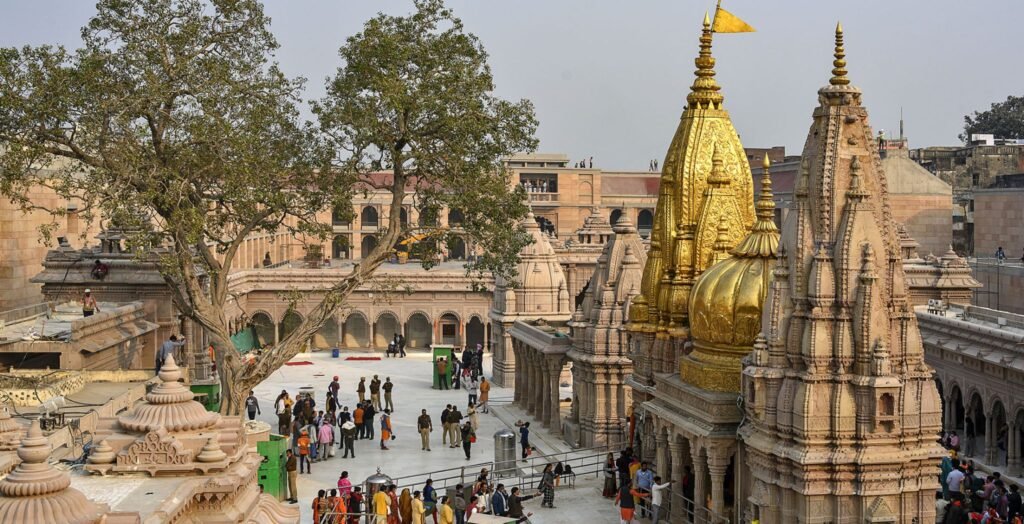On the serene banks of the revered Ganges River in Varanasi, the Kashi Vishwanath Temple is a beacon of devotion and spirituality.
Dedicated to Lord Shiva, the divine abode is revered as one of the 12 Kashi Vishwanath Temple Jyotirlinga, symbolizing the supreme presence of the deity.
Adorned with intricate architecture and spiritual significance, it is a sanctum where devotees seek solace and enlightenment. Often referred to as Vishwanatha or Vishweshwarar, translating to ‘the ruler of the universe,’ Lord Shiva reigns supreme within these sacred walls.
Varanasi, the cultural heart of India, is rightfully hailed as the city of Lord Shiva, owing to the temple’s hallowed presence. Notably, the temple’s towering spire boasts an impressive 800 kg of gold plating, reflecting its opulence and grandeur.
Moreover, visitors are reminded to embrace the sanctity of the space by depositing cameras, mobile phones, and electronic devices outside designated lockers. For an immersive experience, Hindus can explore the inner sanctum, including the revered Jnana Vapi, or wisdom well, while foreigners are guided through Gate number 2, ensuring an inclusive pilgrimage experience.
1. History

The Kashi Vishwanath Temple, a revered shrine in Hinduism, boasts a history as rich as it is tumultuous. It can be traced back to ancient scriptures like the Skanda Purana, showcasing its significance through the ages. However, the temple endured numerous trials, facing destruction and subsequent rebuilding multiple times.
In 1194, Qutb-ud-din Aibak’s army razed it to the ground, marking the start of a cycle of destruction and reconstruction. Various rulers contributed to its resurrection from the reigns of Iltutmish to Akbar.
Yet, in 1669, Aurangzeb’s decree led to its ultimate demolition, replaced by the Gyanvapi Mosque. Moreover, it wasn’t until 1780, under the patronage of Maharani Ahilyabai Holkar, that the temple found its current form, adorned with gold donated by Sikh Maharaja Ranjit Singh and silver from the Bhosales of Nagpur.
Today, under Uttar Pradesh government management, it stands as a testament to the resilience, devotion, and enduring spirit of the Vishwanath temple.
2. Significance

The Kashi Vishwanath Temple, also known as the Kashi Vishwanath Mandir, is profoundly significant in Hinduism, making it one of Varanasi’s most venerated sites.
For devout Hindus, a pilgrimage to this sacred temple, coupled with a cleansing dip in the holy waters of the Ganges, is believed to pave the path to ultimate liberation, known as ‘Moksha.’
This belief is deeply rooted in the spiritual fabric of Hindu tradition. Legend has it that at the Vishwanath Temple, Lord Shiva himself imparts the mantras of salvation to those who pass away naturally within its sacred precincts.
Throughout history, this temple has attracted revered figures like Goswami Tulsidas, Swami Vivekanand, Adi Sankaracharya, Guru Nanak Dev, Swami Dayanand Saraswati, and Ramakrishna Paramhansa, among others.
Furthermore, its architectural grandeur and historical significance draw visitors from all corners of the globe. Their visits add spiritual significance to an already sanctified space in the historical places in Uttar Pradesh.
3. Architecture

The Kashi Vishwanath Temple, a revered site in Hinduism, stands as a testament to the grandeur of Indian architecture. Nestled within the Vishwanatha Galli, near the river, it forms a spiritual oasis amidst the bustling lanes of Varanasi.
The main temple, crafted in a quadrangular layout, serves as the heart of the complex, surrounded by smaller shrines devoted to various deities such as Kaalbhairav, Dhandapani, and Vishnu.
Furthermore, fashioned from black stone, the central Shivalinga stands with a height of 60 cm and 90 cm in circumference, nestled within a silver altar. A significant feature is the Gyaan Vapi, a sacred well believed to have sheltered the Shivalinga from foreign invasions.
Moreover, the architectural marvel comprises three Kashi Vishwanath Temple distance elements: a towering spire atop the Lord Vishwanath temple, a gleaming gold dome, and a glorious gold spire crowned with a flag and a trident. Lastly, with its Kashi Vishwanath Temple story and intricate craftsmanship, it continues to inspire awe and devotion among pilgrims and visitors alike.
4. Vishwanath Gali
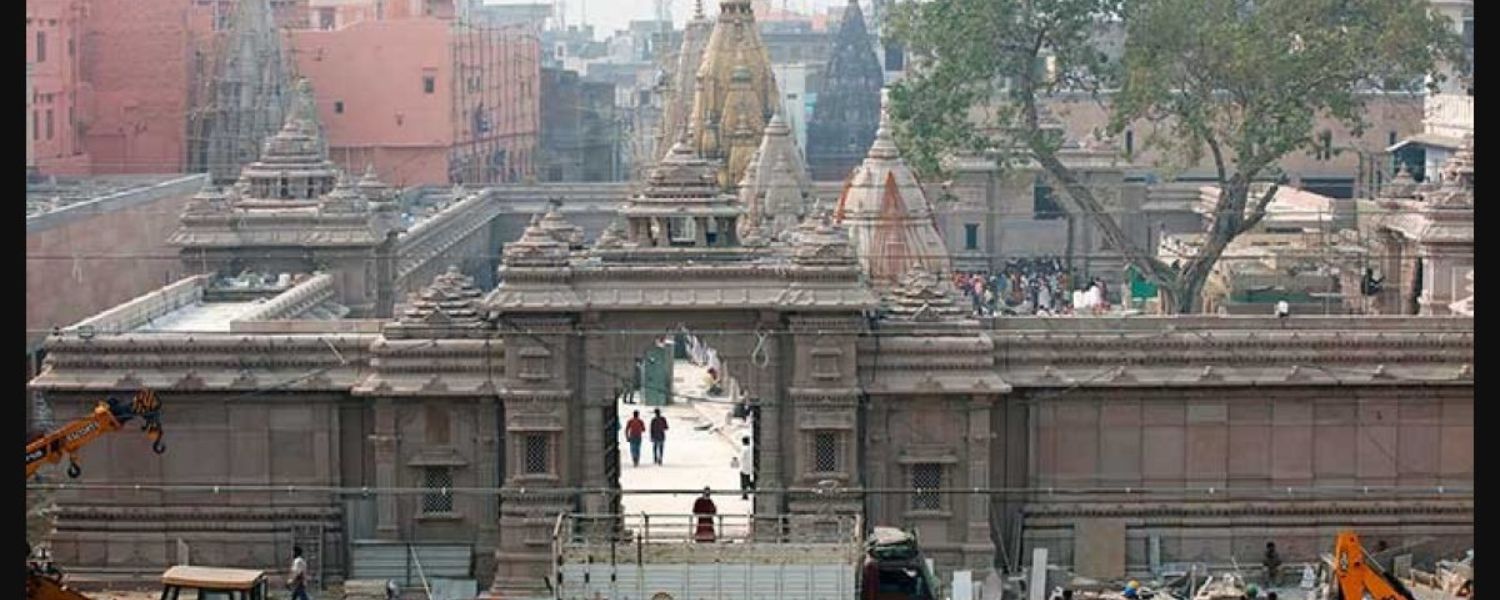
Kashi Vishwanath temple is located in the bustling Vishwanath Gali, a vibrant street renowned for its diverse array of shops and delights.
As pilgrims make their way to seek Lord Shiva’s blessings, they find themselves engulfed in a lively marketplace offering an abundance of pooja items, sweets, and traditional garments.
Besides religious paraphernalia, the charm of Vishwanath Gali extends to a famous ladies’ corner, enticing visitors with exquisite Banarasi sarees, dresses, and intricate jewelry.
Moreover, this vibrant hub caters to every need, boasting an eclectic mix of bangles, Kurtis, wooden toys, brass artifacts, and religious literature.
Furthermore, amidst the hustle and bustle, quaint roadside kiosks tempt passersby with delectable snacks, satisfying any untimely hunger pangs.
For devotees, Vishwanath Gali is not just a thoroughfare but a delightful shopping haven offering affordable treasures to cherish alongside their spiritual journey of the heritage of Uttar Pradesh.
5. How To Reach

If you aim to visit the sacred Kashi Vishwanath Temple in Varanasi, India, reaching there is relatively straightforward. Located merely 5 km away from Varanasi Railway Station, the temple holds a significant spot for devotees and travelers alike.
To embark on this spiritual journey, taxis or auto rickshaws are your best companions, offering a hassle-free ride from anywhere within the city.
Moreover, upon reaching the vicinity, you’ll find the temple ensconced within Vishwanath Gali, a pedestrian-friendly street where vehicles can’t tread.
Besides, to embrace the temple’s sanctity, one must walk the path leading to its doorstep amidst Varanasi’s bustling sounds and vibrant sights.
Furthermore, for an unforgettable experience steeped in devotion and cultural richness, a visit to Vishwanath Temple promises an enriching adventure filled with spiritual resonance and historical significance.
6. Dress Code for Visiting Kashi Vishwanath Temple
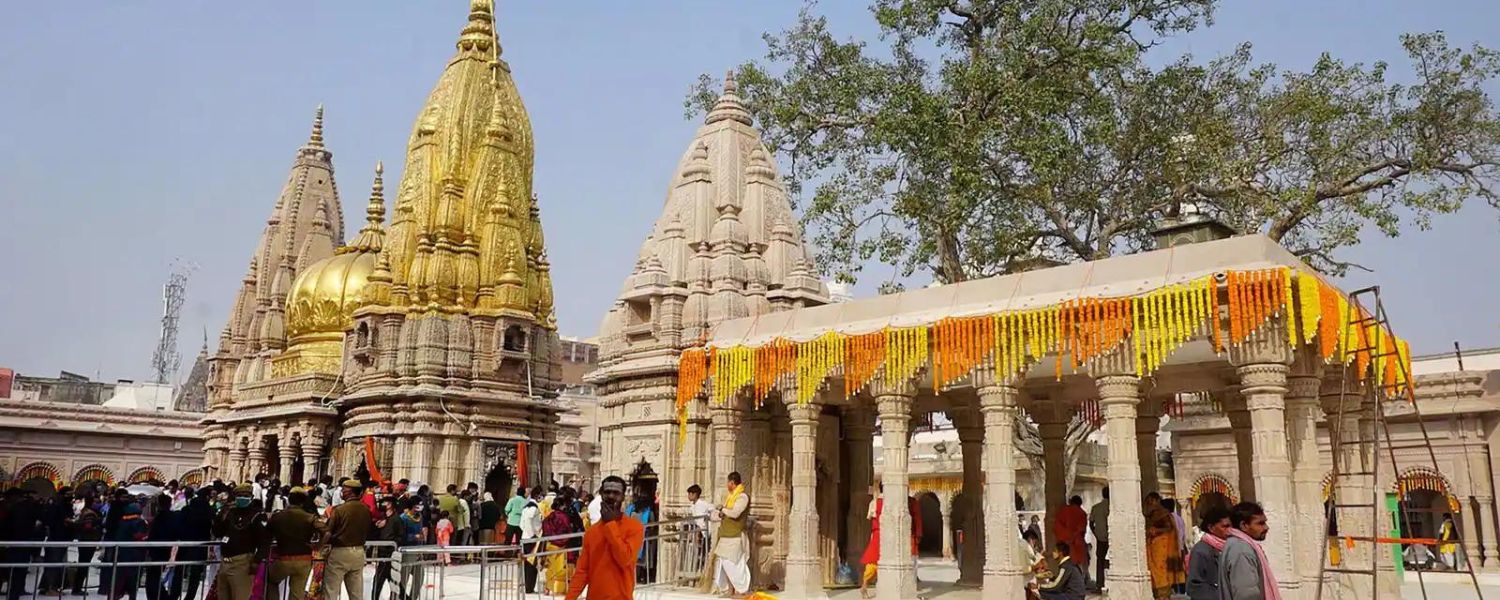
Here’s the lowdown on the dress code you need to follow. As per a recent decree by the Kashi Vishwad Parishad, men are required to don a Dhoti-Kurti, while women are expected to wear Sarees.
This mandate applies particularly to devotees aiming for sparsh darshan, which involves entering the temple’s inner sanctum. However, fret not if you’re not clad in traditional attire; individuals dressed in Western wear are still welcome to pay their respects to the deity, but only outside the sanctum. Moreover, it’s essential to adhere to these guidelines to maintain the sanctity of the temple.
7. Historical Evolution
The journey of the Kashi Vishwanath Temple through history is a tale of resilience, shaped by construction, destruction, and renewal amid invasions, conflicts, and natural disasters.
Despite facing numerous challenges, this sacred site has endured, symbolizing the unwavering devotion of Hindus. From its earliest origins to its current form, the temple has witnessed cycles of destruction and reconstruction, each reaffirming its spiritual significance.
A. Ancient Origins
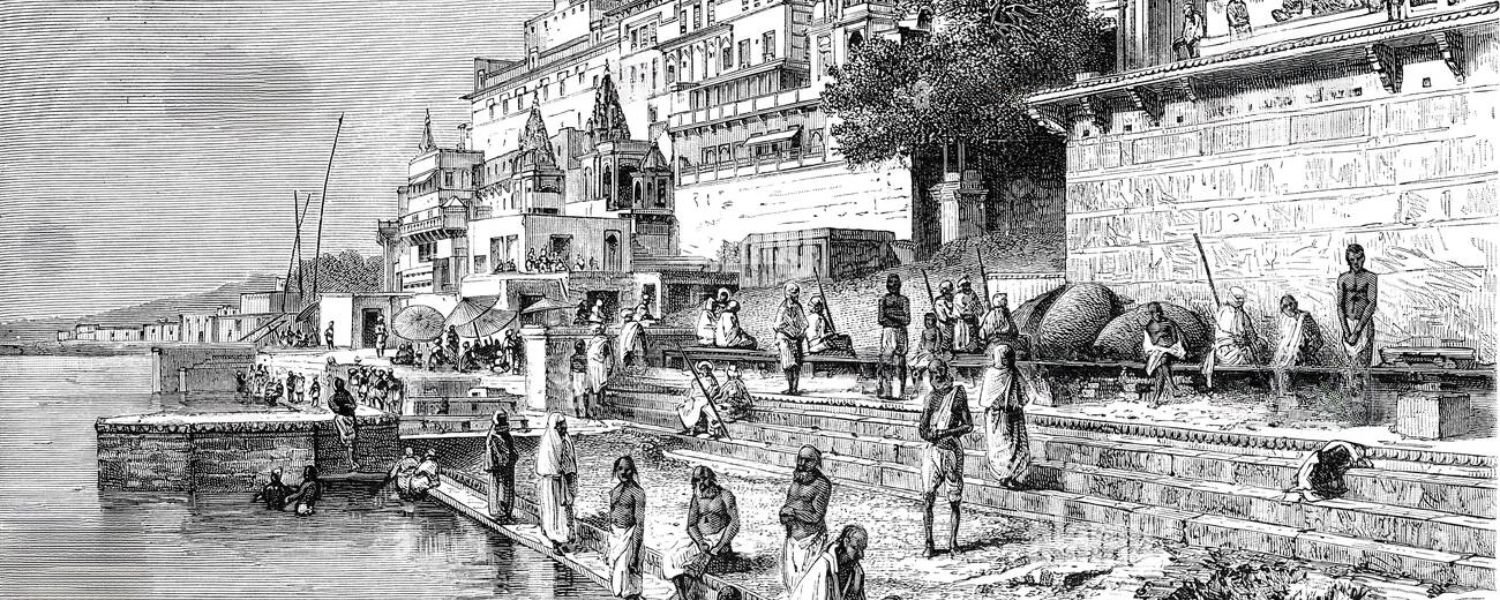
Kashi Vishwanath temple traces its roots back to the ancient era under the reign of King Harishchandra. Initially a modest tower, this sacred site burgeoned in religious prominence over time.
As a beacon of spiritual devotion, the temple garnered reverence from pilgrims far and wide. Its serene ambiance and timeless architecture transport visitors to an era steeped in tradition and faith.
Furthermore, the Vishwanath temple is a testament to the enduring legacy of devotion, embodying the essence of ancient origins and spiritual enlightenment.
B. Destruction by Invaders
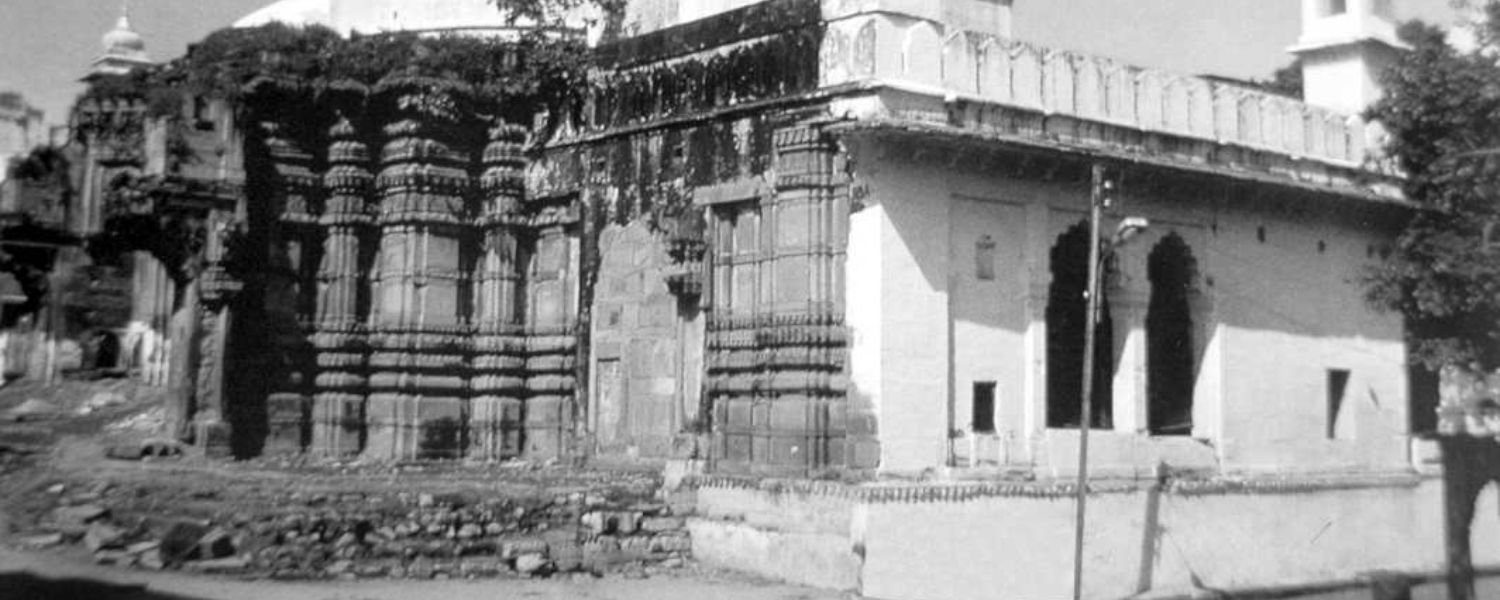
The Kashi Vishwanath Temple, a revered Hindu shrine, endured its first significant peril during the 11th-century invasion led by Mahmud of Ghazni. Mahmud, a conqueror of Islamic descent, ravaged numerous temples across northern India, including the esteemed Vishwanath Temple.
This onslaught marked the commencement of a turbulent era in the temple’s chronicles. Furthermore, Mahmud’s invasion inflicted profound devastation, leaving behind a trail of desolation and anguish.
Despite enduring this tragic chapter, the Vishwanath Temple stood resilient, a testament to the enduring spirit of faith and reverence that has defined it for centuries.
C. Rebuilding by Kings
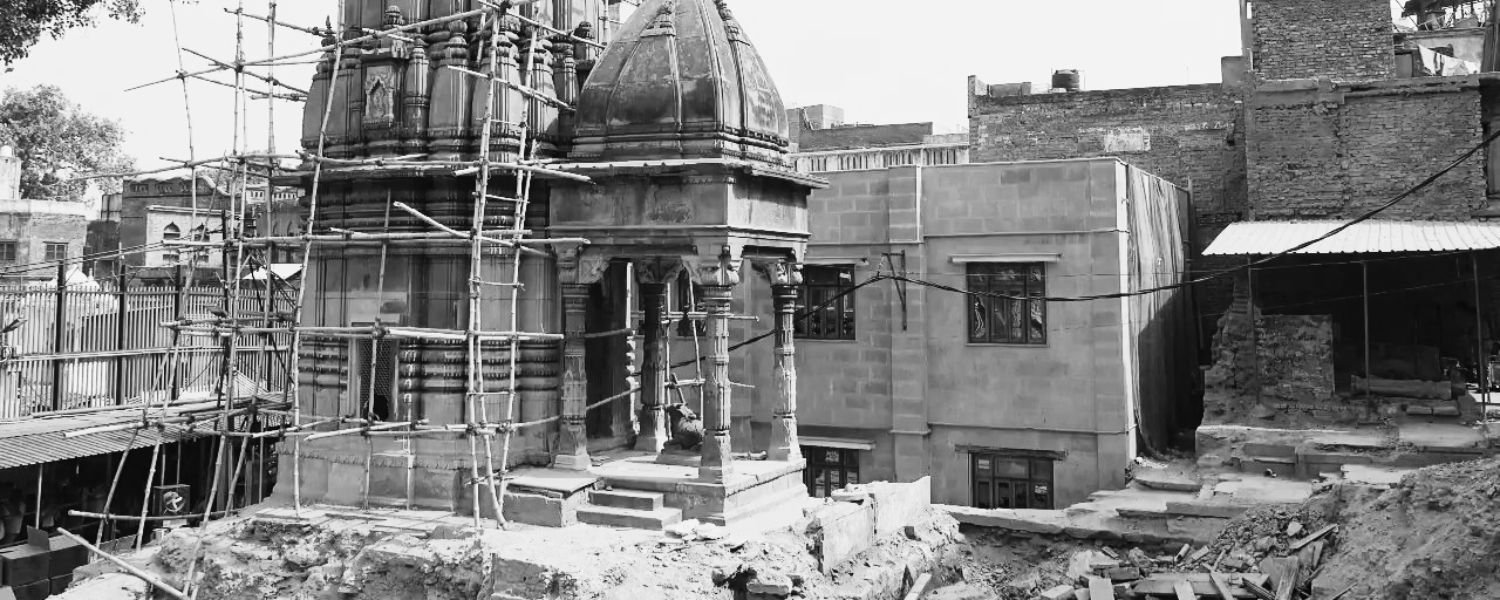
Throughout history, the Kashi Vishwanath temple has weathered the ravages of time and destruction. Yet, the resilience of Hindu kings and rulers stood as a beacon of hope as they undertook the monumental task of rebuilding the sacred site. Each dynasty left an indelible mark on the temple’s restoration journey, from the Marathas to the Mughals and the Rajputs.
Over the centuries, countless renovations and expansions ensued, each layer adding to the temple’s glorious architectural allure. Despite adversity, the unwavering commitment to preserving this spiritual sanctuary is a testament to human perseverance and devotion. Furthermore, it signifies the enduring bond between faith and heritage, uniting generations in reverence for this hallowed place.
D. Aurangzeb’s Destruction
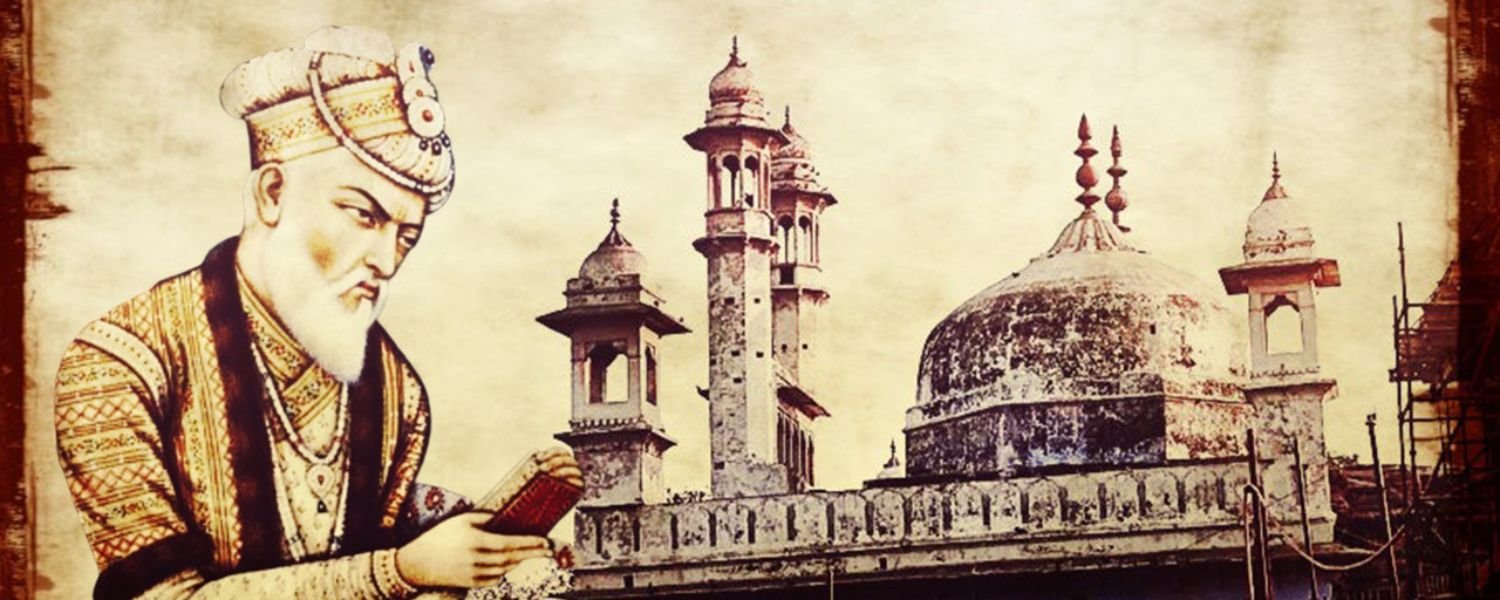
Throughout history, the Kashi Vishwanath temple has weathered the ravages of time and destruction. Yet, the resilience of Hindu kings and rulers stood as a beacon of hope as they undertook the monumental task of rebuilding the sacred site. Each dynasty left an indelible mark on the temple’s restoration journey.
First, the Marathas, then the Mughals, and the Rajputs. Over the centuries, countless renovations and expansions ensued, each layer adding to the temple’s glorious architectural allure.
Besides, despite adversity, the unwavering commitment to preserving this spiritual sanctuary is a testament to human perseverance and devotion. Furthermore, this enduring dedication not only reflects the importance of the temple but also signifies its integral role in the cultural fabric of India.
E. Re-establishment and Reclamation
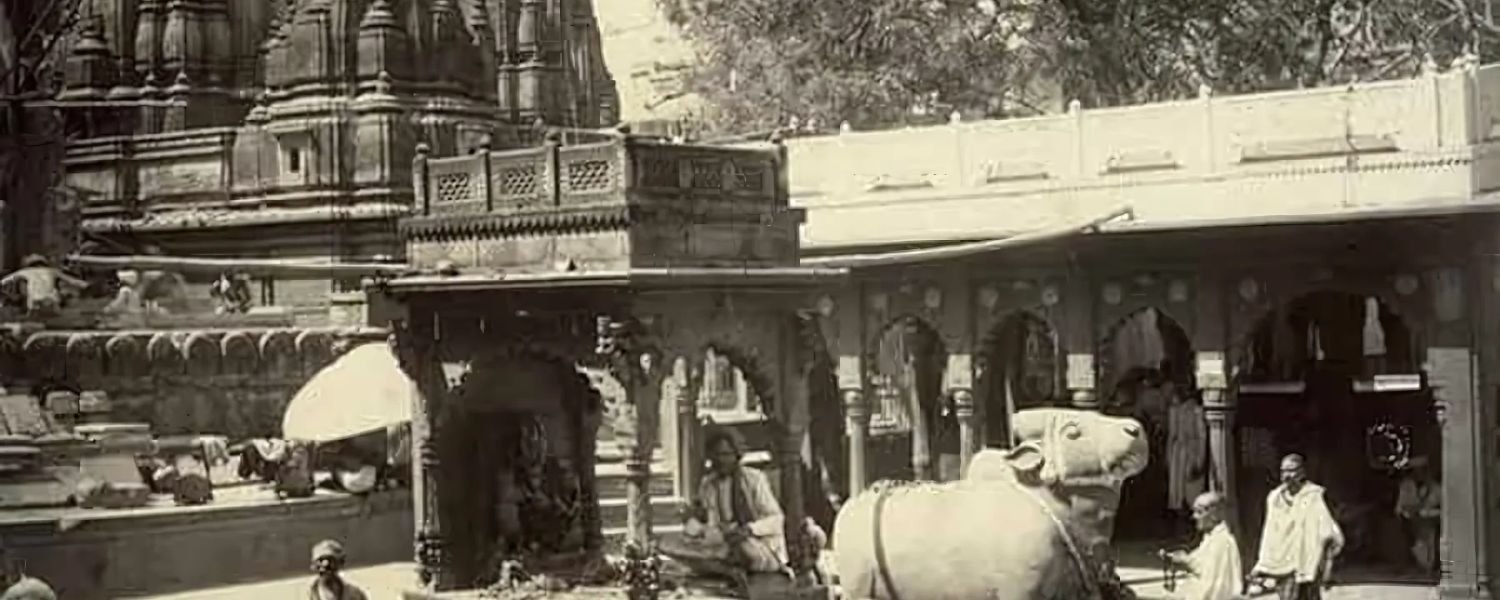
Following Aurangzeb’s reign, devout Hindus embarked on a mission to restore the revered Kashi Vishwanath temple to its rightful place. The present temple complex, standing tall today, came to fruition in the 18th century under the patronage of Queen Ahilyabai Holkar from Indore.
Renowned for her emotional support of temple reconstruction and the resurgence of Hindu traditions, Ahilyabai’s legacy resonates through the majestic architecture of the Kashi Vishwanath temple.
Her unwavering dedication symbolizes a pivotal chapter in the temple’s history, marking a resurgence of cultural pride and religious significance for millions of devotees worldwide.
F. Modern Restoration and Conservation
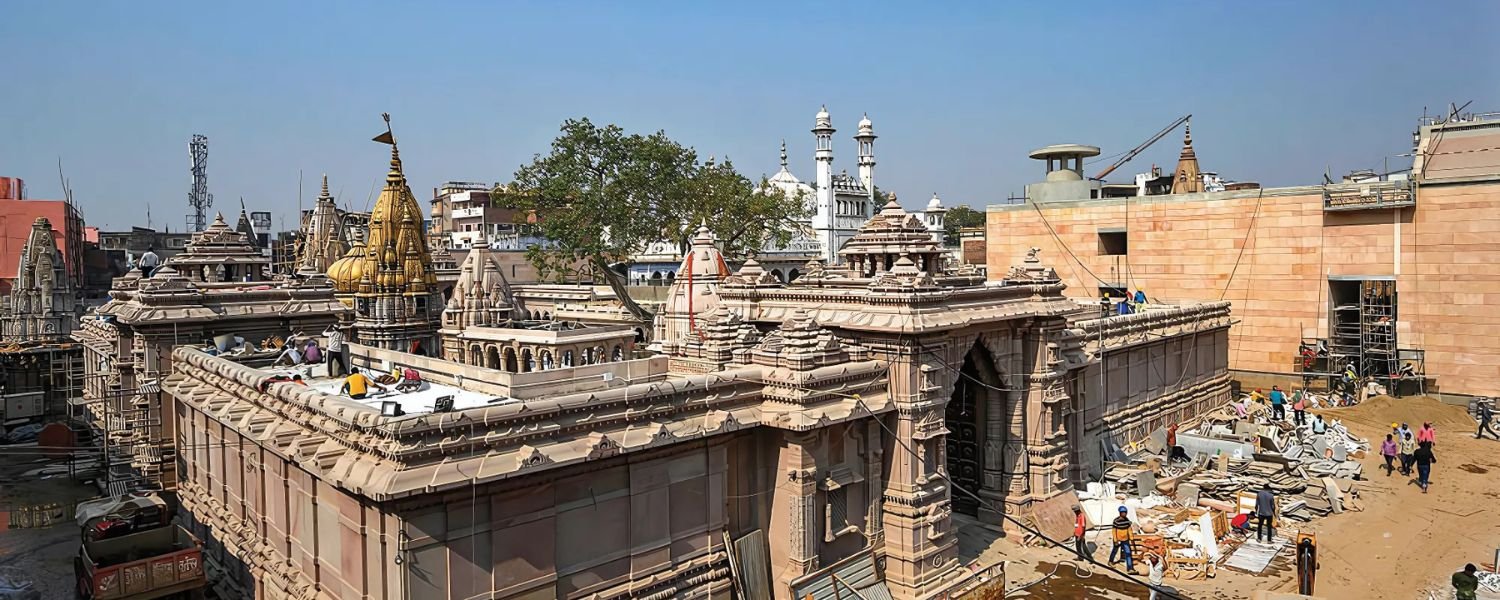
Modern Restoration and Conservation efforts at the Kashi Vishwanath temple have emerged as vital in safeguarding its architectural and cultural legacy. These initiatives prioritize shielding the temple from environmental degradation and natural wear, securing its existence for forthcoming devotees.
The temple’s grandeur is preserved and enhanced through meticulous restoration, ensuring its relevance and allure endure through time. Experts meticulously address structural concerns by employing advanced conservation techniques while maintaining the temple’s historical integrity.
Conclusion
In conclusion, the Kashi Vishwanath Temple is a symbol of unwavering devotion and a testament to resilience and spiritual enlightenment.
Through its turbulent history of destruction and reconstruction, this sacred site has retained its significance as one of the twelve Jyotirlingas, representing the supreme abodes of Lord Shiva.
Nestled amidst the cultural heart of Varanasi, the temple’s architectural grandeur and spiritual ambiance continue to captivate pilgrims and visitors alike.
As devotees embark on their spiritual journey, they find solace in the temple’s hallowed precincts, seeking blessings and ultimate liberation.
You can also make Kashi Vishwanath Temple online booking. With its rich history, intricate architecture, and vibrant surroundings, the Kashi Vishwanath Temple beckons all to experience the profound essence of devotion and transcendence, making it a timeless sanctuary for spiritual truth and enlightenment seekers.
FAQ
Q: Why is the Kashi Vishwanath temple famous?
A: Kashi Vishwanath Temple, dedicated to Lord Shiva, holds profound significance in Hinduism. Situated in Varanasi, Uttar Pradesh, it stands as one of the twelve Jyotirlingas, representing the holiest abodes of Lord Shiva. Positioned on the sacred banks of the Ganga, it attracts devotees globally for its spiritual ambiance and historical importance.
Q: What is the mystery of the Kashi Vishwanath temple?
A: Among the temple’s mysteries lies a network of underground passages or ‘gufa.’ Legends suggest priests used these to evade invaders who ravaged the temple. These passages add intrigue and adventure to the temple’s ancient history.
Q: Can I touch the Kashi Vishwanath temple?
A: During specific rituals, such as the pre-dawn aarti, devotees are permitted to touch the lingam, the sacred symbol of Lord Shiva, amidst the fragrance of marigolds and the flicker of oil lamps.
Q: Which jyotirlinga is most powerful?
A: The Kashi Vishwanath Temple, home to the Vishwanath Jyotirlinga, is the epitome of divine power, drawing individuals from far and wide to seek blessings and spiritual solace.
